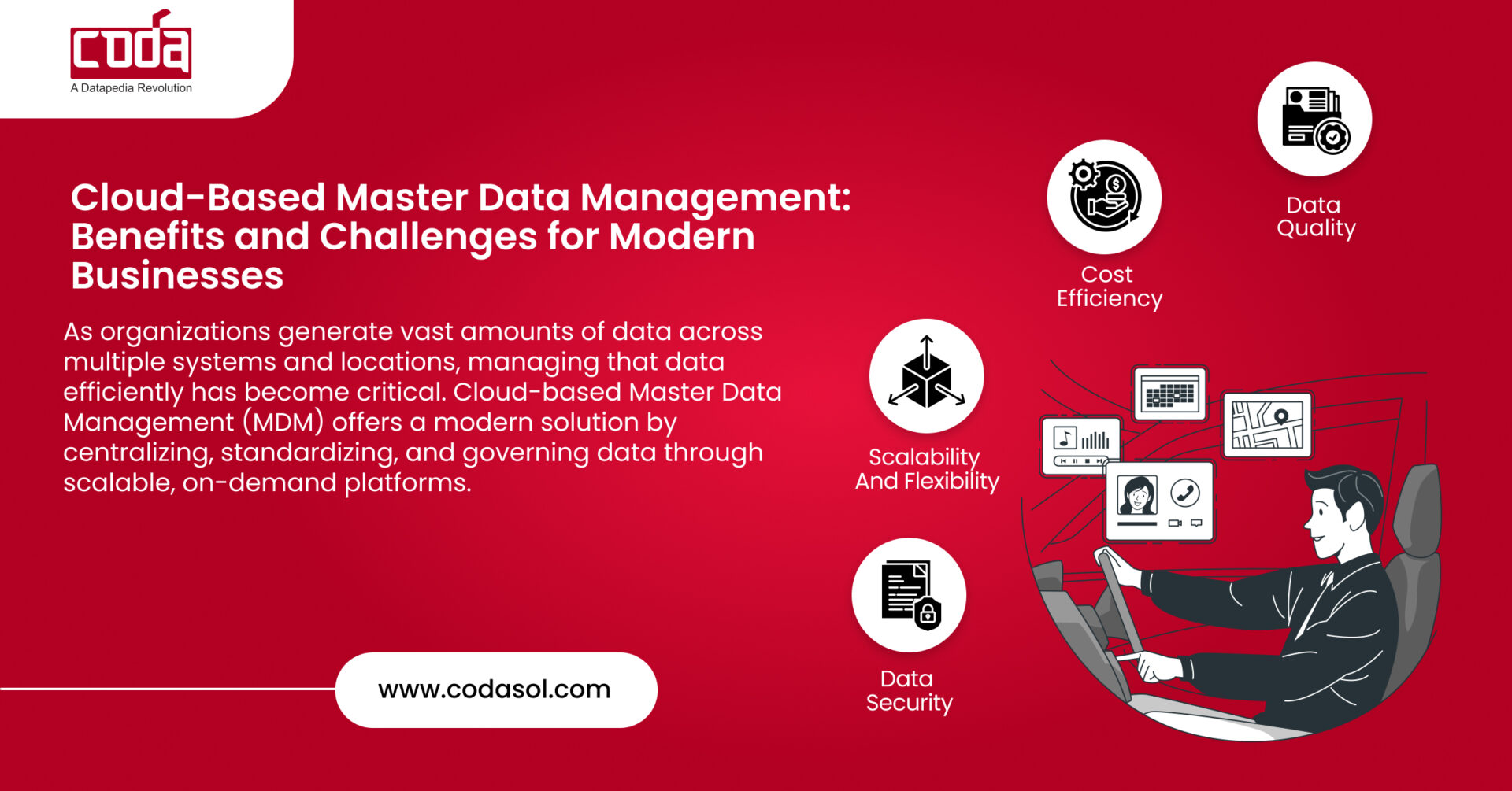As businesses in the GCC and MENA regions continue to evolve, many are embracing cloud-based Master Data Management (MDM) to enhance their data management strategies. This shift represents a significant advancement from traditional methods, utilizing modern cloud technologies to streamline operations across various industries, including Oil & Gas, Manufacturing, Energy & Utilities, Marine Ports, Pharmaceuticals, and Consumer Goods.
What is Cloud-Based MDM?
Cloud-based MDM leverages advanced cloud technologies to manage and control data across single or multiple enterprise systems. Unlike traditional MDM, which relies on on-premises infrastructure, cloud MDM offers scalable, off-premise storage that supports vast volumes of structured, semi-structured, and unstructured data. This evolution enhances data integration, recovery, backups, and large file sharing.
Traditional vs. Cloud MDM
| Factors | Traditional MDM | Cloud MDM |
|---|---|---|
| Infrastructure | Hosted on organization’s servers; high IT and hardware costs. | Utilizes scalable cloud infrastructure; reduces IT investment. |
| Data Types | Limited to structured data. | Handles structured, semi-structured, and unstructured data. |
| Accessibility | Restricted access; often limited to physical locations. | Accessible from anywhere, anytime with an internet connection. |
| Integration | Difficult to merge data across systems. | Easy integration with various enterprise systems. |
| Data Recovery | Complex, time-consuming, and costly. | Automated recovery and backup features. |
| Cost Structure | Costs for hardware, software licenses, installation, and maintenance. | Subscription-based pricing; cost-effective. |
Benefits of Cloud-Based MDM
Data Quality
Cloud MDM platforms like CODASOL’s PROSOL centralize data into a unified record, enhancing accuracy and consistency. This reduces the cost of correcting inaccurate data, which can be between $60 and $80 per item. Cloud MDM reduces the 25 minutes per SKU spent annually on manual data cleansing.
Cost Efficiency
Traditional systems require significant investment in hardware and software. Cloud MDM might offer a subscription-based model that is generally more cost-effective, leading to a 95% improvement in data usability and an 89% reduction in the time needed to prepare data for business use.
Scalability and Flexibility
Cloud platforms support advanced technologies such as IoT, Machine Learning, and Big Data, enabling businesses to scale operations efficiently. This flexibility allows for auto-updates of applications and data without extensive IT intervention.
Data Security
With advanced encryption and compliance with standards like GDPR and HIPAA, cloud MDM provides robust data protection. This is crucial for sectors such as Pharmaceuticals, where data security is a top priority.
Data Storage and Recovery
Cloud platforms offer large storage capacities through data lakes and warehousing, eliminating storage limitations. Automated backup solutions ensure data is easily recoverable, minimizing downtime and loss.
Data Access and Collaboration
Quick access and data integration capabilities of cloud platforms streamline business operations. Efficient data synchronization and large file sharing foster a seamless workflow across various systems.
Challenges in Cloud Data Management
Security Risks
Although cloud platforms implement high-security measures, vulnerabilities such as data breaches and account hijacking can occur. Organizations must remain vigilant and ensure strong data protection practices.
Unpredictable Costs
While initial costs are lower, ongoing expenses can be unpredictable. Monitoring usage and managing costs effectively is essential to avoid unexpected fees.
Decentralized Control
Data distributed across various platforms and regions can complicate centralized governance, affecting decision-making and compliance. Establishing robust data security policies and maintaining high-quality standards is crucial.
Key takeaway
Adopting cloud-based MDM can transform data management for industries across the GCC and MENA regions, offering enhanced infrastructure, accessibility, and data quality. However, businesses must navigate potential challenges by implementing best practices such as robust data governance strategies, monitoring integrations, and ensuring data security.


